History of the Tsavo Man-Eaters – The Deadly Duo Who Killed and Ate Over 130 Railroad Workers
A notorious pair of Tsavo lions are guilty of claiming the lives of up to 135 people. The deadly duo, known by locals as The Darkness and The Ghost, preyed on railway workers in the Tsavo region of eastern Kenya for nine months in 1898. The lions’ killing spree ended in December of 1898 when they were shot and killed by a British hunter named Colonel John Henry Patterson. The mounted taxidermy skins are now exhibited in the Field Museum in Chicago more than 100 years after their death.
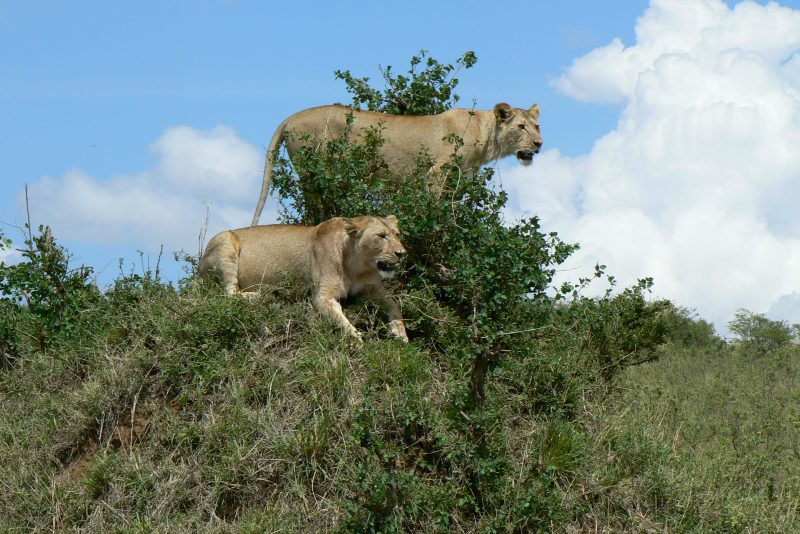
History of the Tsavo Man-Eaters: Patterson’s Account
The story begins in March 1898 when an Indian team of railway workers led by John Henry Patterson arrived in Kenya. They were tasked with building a bridge over the Tsavo River as part of the Kenya-Uganda Railway project. John Patterson’s recollection of the events is documented in a book, The Lions of Tsavo. Author Bruce Patterson writes, “Few of the men at the railhead knew that the name itself was a warning.” The definition of Tsavo means “place of slaughter,” according to the locals of the region.
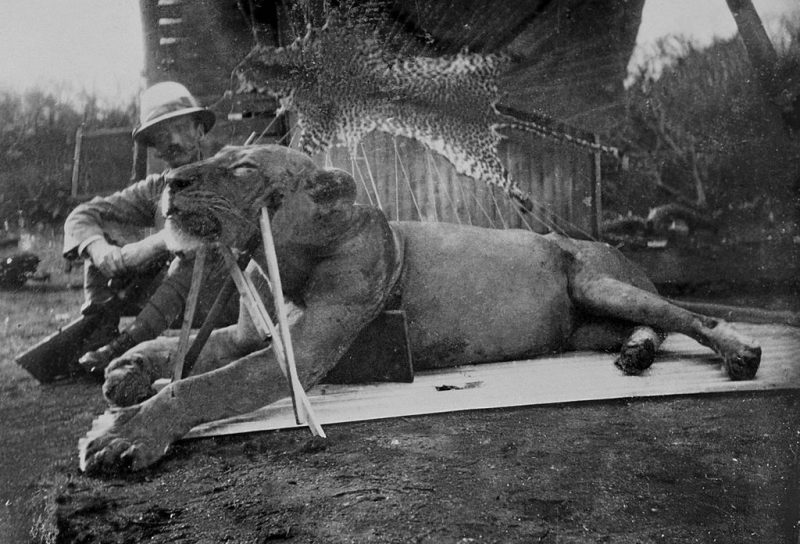
Shortly after John Patterson’s arrival, one of his workers mysteriously disappeared. A search led to the discovery of the worker’s mutilated body and prompted John to begin searching for the lion the following day. He did not find the savage beasts but did stumble upon their den where they had hoarded the corpses of the men who had previously disappeared from the area. The disappearances and killings continued for months, and as a result, hundreds of workers left the area. This put the bridge construction to an immediate halt.
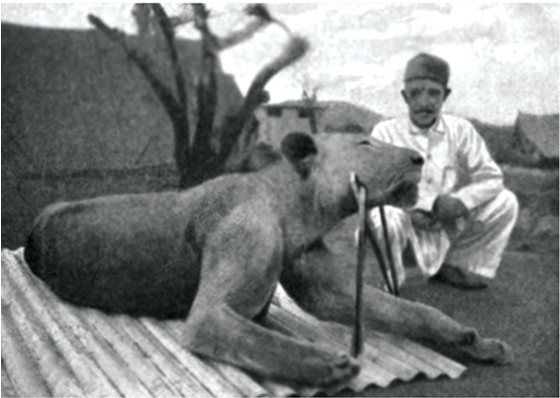
It was not until December 1898 that Patterson was able to hunt down and kill the savage pair that he and the locals had blamed for the killings and disappearances of his crewmen. The first lion was shot and killed on December 9. The second took Patterson an additional three weeks to track down. Patterson reported that, by that time, the lions had killed a total of 135 people from his crew.
Why did they Kill and Eat People?
No one is certain why the man-eating duo went on a killing spree. According to Jason Bittel, a writer for National Geographic, some researchers believe that drought, disease, and a lack of prey left the lions with no other choice but to kill and eat the nearby humans. They depended on the flesh for their survival. Larisa DeSantis, a paleoecologist at Vanderbilt University, has carried out a new analysis that disproves some of John Patterson’s accounts of the lions’ dire need for food. According to DeSantis, their teeth show no evidence of having consumed human bones, which they would have done if they were as desperate for sustenance as John Patterson had originally claimed.
“Our results suggest that preying on people was not the lions’ last resort, rather, it was simply the easiest solution to a problem that they confronted” -Larisa DeSantis
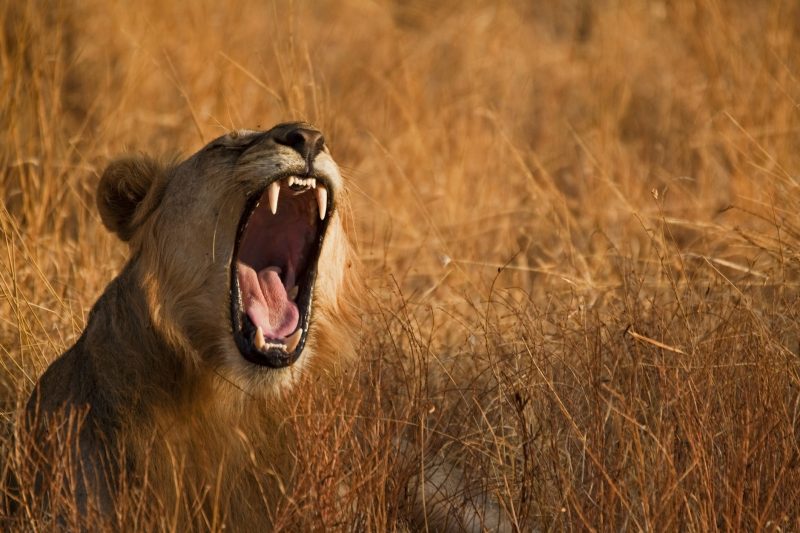
Studies and research performed by DeSantis and her team suggest that dental disease and injuries caused the lions to transform into habitual man-eaters. The Tsavo lions’ dental microstructures were compared to captive lions, cheetahs, and hyenas from zoos. Their teeth did not show the wear of hyena teeth; this indicates that they did not chew the bones of the victims as scavengers as hyenas do. Their teeth were similar to captive large cats who regularly eat softer food that does not include bones. They did, however, show some serious dental disease. This makes it a more likely hypothesis that the lions resorted to eating the flesh of the easier-to-kill humans rather than wild animals.
Conclusion
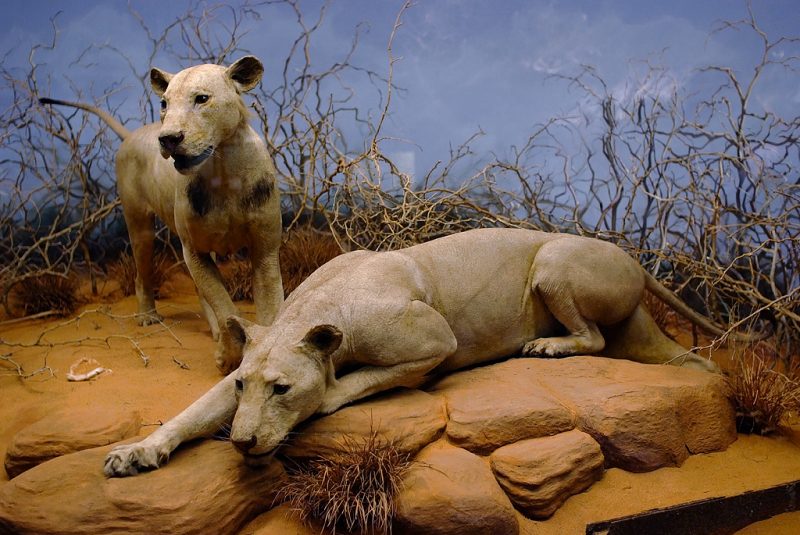
The Tsavo lions may or may not be the blockbuster villains John Patterson had made them out to be. An article written for Atlas Obscura stated that lions rarely attack humans, but that this is subject to change in the future due to food shortages and the changing environment of the lions’ natural habitats. So, although the original hypothesis that the Tsavo lions were desperate for food because of local drought and a decrease in natural prey is likely untrue, it is entirely possible that this scenario might become a bigger issue as humans take over lion territory. As for John Patterson, he wrote a book about his adventures that was published in 1907. He also became a Game Warden in Kenya due to his actions, which saved the railroad and countless other potential victims. This remarkable story was also the inspiration for a 1996 blockbuster movie titled The Ghost and The Darkness.





